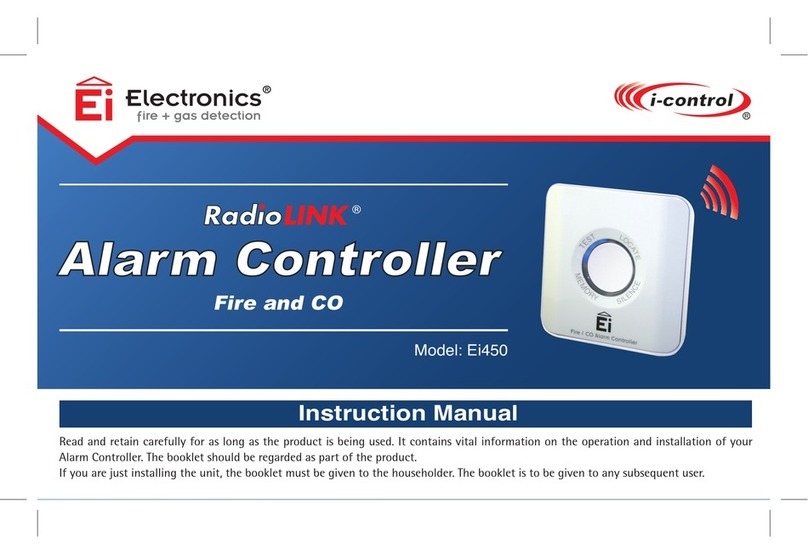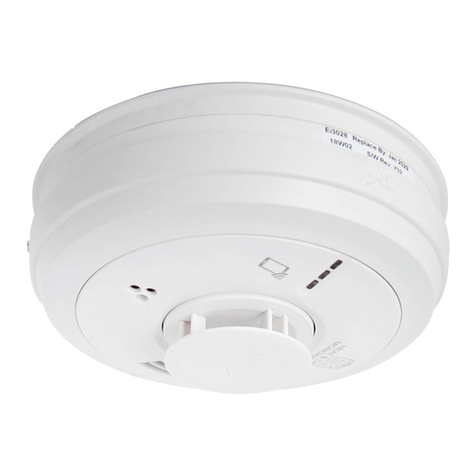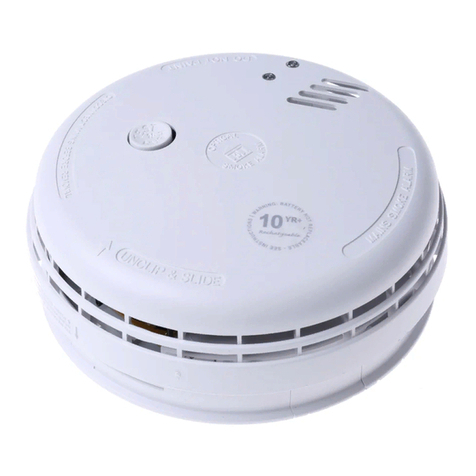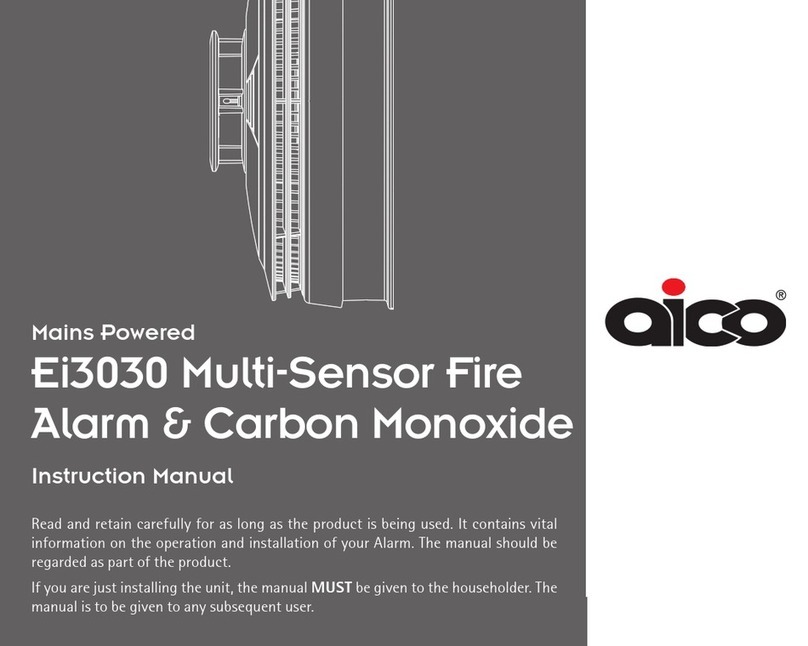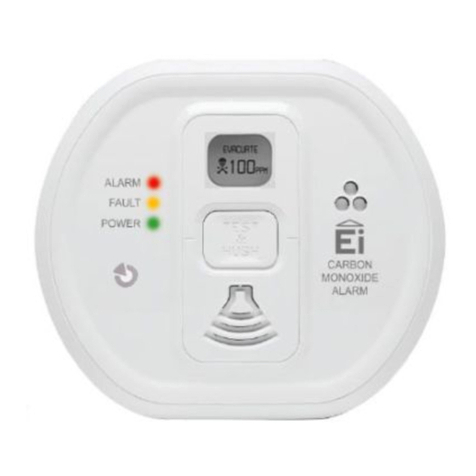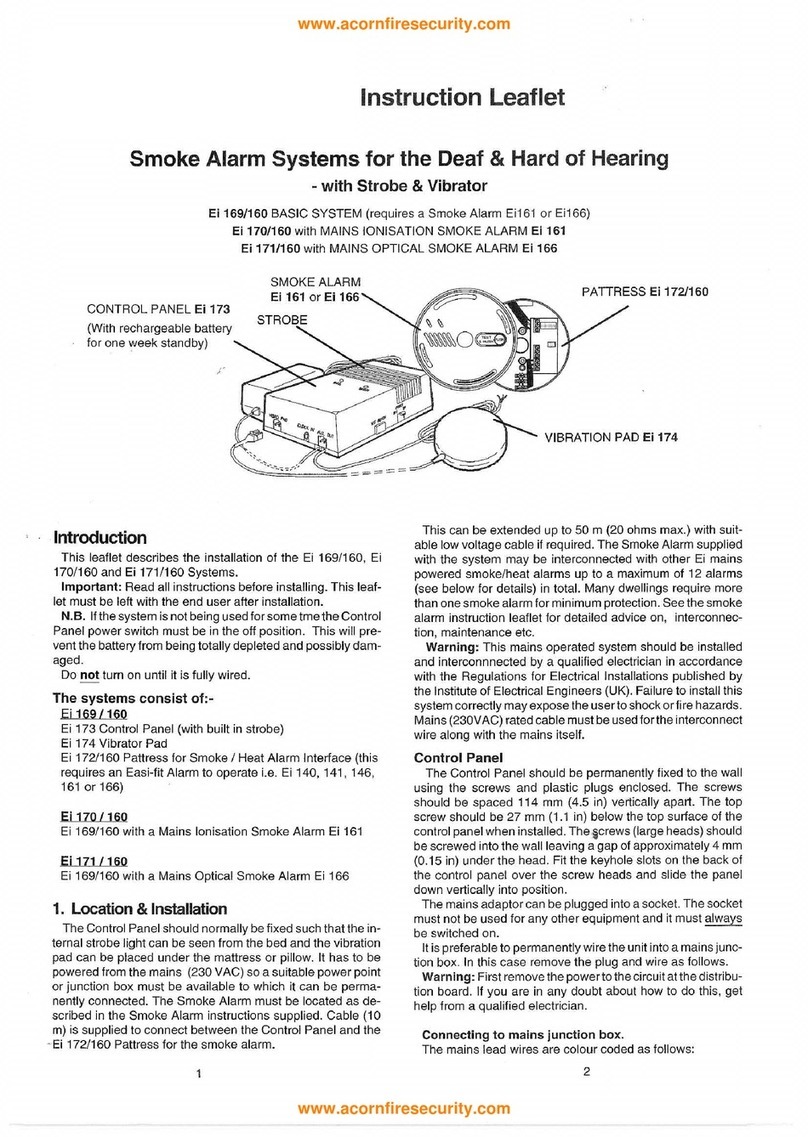
6
The Ei3024 is a Multi-Sensor Fire Alarm with heat enhanced optical smoke sensor and automatic dust
compensation, delivering a faster response to a wider range of fires. It detects both smoke and heat
from a fire and is ideal for hallway, landing, living room and bedroom areas.
The Ei3016 is an Optical Smoke Alarm, with a proven optical sensor and automatic dust compensation
delivering a fast response to smouldering fires. It is ideal for hallway, landing and living room areas.
The Ei3014 is a Heat Alarm with a Class A1 heat detection sensor. It can only to be used as part of a
fire detection system, i.e. interconnected with Aico/Ei Electronics mains powered Multi-Sensor Fire or
Smoke Alarms. It is ideal for kitchens, garages, boiler houses and other areas where there are normally
high levels of fumes, smoke or dust i.e. places where Smoke Alarms cannot be installed without the
risk of excessive nuisance alarms.
Up to 12 Alarms can be interconnected so that if one senses fire, all Alarms sound. It can be a
hardwired interconnection, a wireless interconnection or a mixture of both (for the wireless option
an Ei3000MRF SmartLINK module needs to be added to each Alarm – sold separately).
The Ei3000 series is supplied with a mounting plate that allows very quick and simple installation
of the Alarm. The mains and battery power is automatically connected as the Alarm slides onto the
mounting plate. Each Alarm comes with built-in rechargeable backup batteries to power the Alarm
in the event of a mains failure.
AudioLINK
The Ei3000 series Alarms are AudioLINK enabled. This feature allows the user to download information
from the Alarm through the use of a smart phone App. For more information on using this feature,
please refer to the relevant section on www.aico.co.uk.






